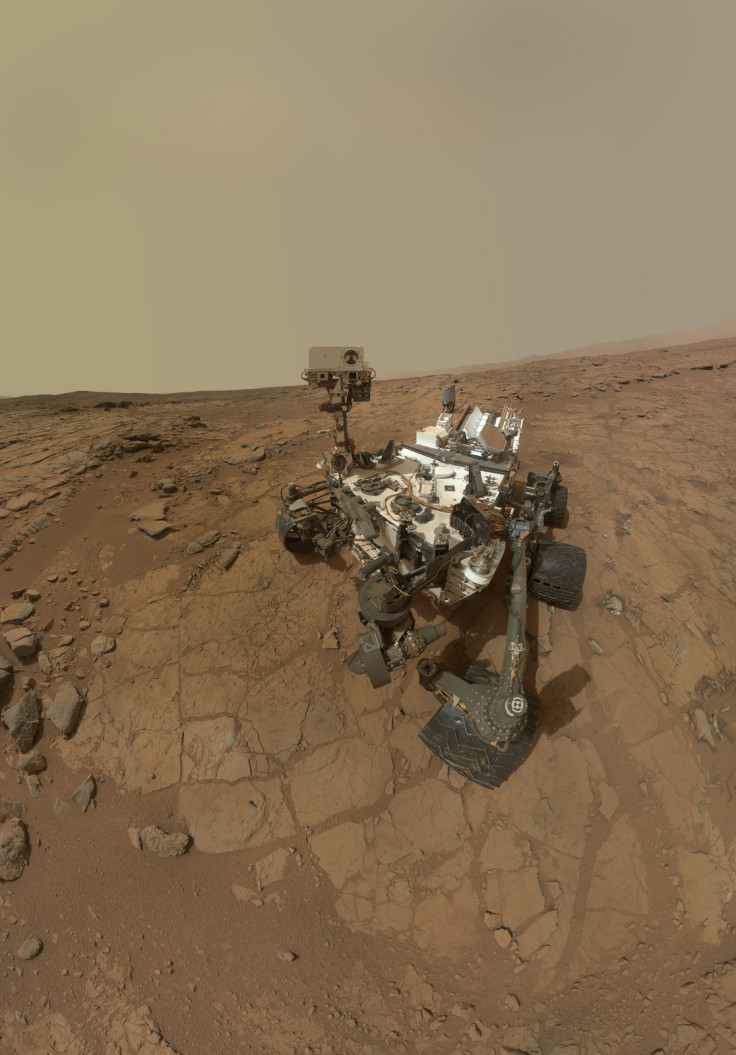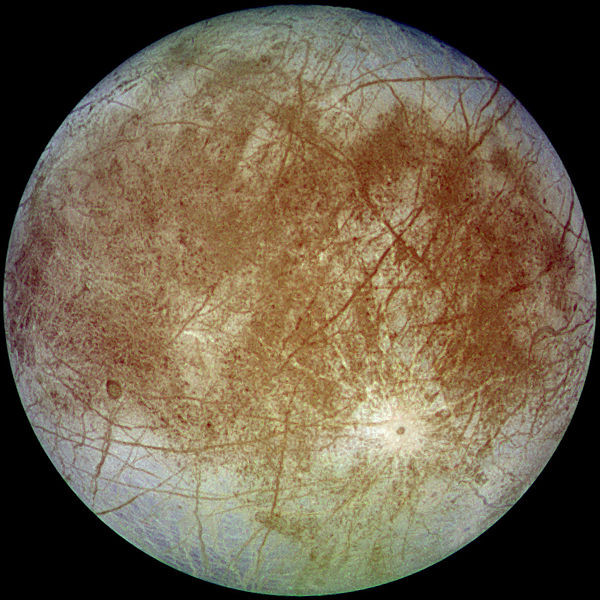Search for alien life: Mars and moons of Jupiter and Saturn best bet for extraterrestrial discovery

As scientists meet to discuss the search for alien life, IBTimes UK looks at current research, from Mars and beyond to signals from extra-terrestrial beings.
Where might alien life be found? Nasa scientists are hosting a live debate on the subject which you can tune into here - Nasa: Watch scientists discuss hunt for alien life live online.
Mars

Mars once had an atmosphere and liquid water, meaning conditions could have been ripe for alien life. While it is extremely unlikely life remains on the Red Planet today, scientists hope to find evidence of past inhabitants.
A study from January looking at images from by Nasa's Curiosity Rover show structures on Martian rocks that are similar to those created by microbes on Earth. While these findings will take years to confirm, they add weight to the discovery of organic chemicals and methane spurts in the atmosphere – an indication of microbial life in a not too distant past.
Saturn's icy moon Enceladus

Enceladus, located almost 800 million miles away, is one of the top candidates for alien life in our solar system. Recent research showed hydrothermal activity on Saturn's icy moon, suggesting it could host life.
Scientists were analysing grains from the Cassini mission believed to have come from an icy spray from the moon's south polar region. "It's very exciting that we can use these tiny grains of rock, spewed into space by geysers, to tell us about conditions on - and beneath - the ocean floor of an icy moon," said study author Sean Hsu.
Astrobiologist Chris McKay also recently said the massive ocean beneath Enceladus' ice is our best bet within our solar system: "Enceladus is most likely to give us an answer soonest," he said.
Europa

Jupiter's moon Europa is another potential candidate for extra-terrestrial life. Nasa recently announced a mission is to be launched to the icy moon to search for aliens. The US space agency has commissioned a team of experts to consider the goals of such a mission – the composition and chemistry of the moon's ocean, the thickness, uniformity and dynamics of its shell and the surface geology.
While such a mission is still several years off, Nasa announced it has requested $30m (£19.9m) for preliminary studies into the Europa Clipper mission. "Europa's ocean, to the best of our knowledge, isn't that harsh of an environment," said astrobiologist Kevin Hand, JPL's deputy chief scientist for solar system exploration. He added, however, that the primary goal would not be to look for alien life.
The Milky Way and beyond

A recent report in the Monthly Notices of the Royal Astronomical Society said a mathematical model would indicate there are billions of planets located within the habitable orbital zones of stars in the Milky Way. Scientists used the Titius-Bode law to predict the probability of the number of stars in the galaxy that fall under these conditions – and findings indicate each star will have between one and three planets.
Further to this, astrophysicists also recently found planets outside our solar system have day-night cycles just like Earth – vastly increasing the number of exoplanets that could host life. Previously, scientists thought exoplanets rotated in sync with their stars, meaning one side is always facing the sun. But this is not the case, lead author Jérémy Leconte said. "Planets with potential oceans could have a climate that is much more similar to Earth's than previously expected," he said.
"If we are correct, there is no permanent, cold night side on exoplanets causing water to remain trapped in a gigantic ice sheet. Whether this new understanding of exoplanets' climate increases the ability of these planets to develop life remains an open question."
Another study from last year also pointed out that alien life could be widespread if we delve below the surface of a planet. PhD student Sean McMahon explained: "A planet needs to be not too close to its sun but also not too far away for liquid water to persist, rather than boiling or freezing, on the surface.
"But that theory fails to take into account life that can exist beneath a planet's surface. As you get deeper below a planet's surface, the temperature increases, and once you get down to a temperature where liquid water can exist – life can exist there too."
Using a computer model including the top five kilometres below the surface of a planet, the team found the potential habitable zone for an Earth-like planet is three times what is currently believed.
Alien contact

Scientists have been listening out for signals from alien civilisations for over 30 years but, as of yet, to no avail – the closest we have come so far turned out to be a microwave.
There is currently an ongoing debate about whether to actively send out signals – some have suggested this would be "asking for trouble."
"The arrogance of shouting into the cosmos without any proper risk assessment defies belief. It is a course that would put our grandchildren at risk," science fiction writer David Brin said.
On the other hand, Frank Drake, founder of the search for extraterrestrial intelligence (Seti), said aliens may already by watching us: "If they [aliens] use their star as a gravitational lens, they get this free, gigantic, super-Arecibo free of charge. They are not only picking up our radio signals, but they have been seeing the bonfires of the ancient Egyptians. They can probably tell us more about ourselves than we know... they've been watching all these years." He added, however, that he is against sending out signals.

The other problem is that alien life on ancient and distant exoplanets could have had far longer to evolve, and so may no longer exist or have evolved to become an extremely advanced civilisation. Tiago Campante, from the University of Birmingham's School of Physics and Astronomy, explained: "imagine there are civilisations out there with a head start of five billion years. The human race has been here for 50,000 years. It's a huge difference.
"There's an analogy. It's like you have some ants living by the side of the road and humans are building a highway next to them. How can you explain to those ants what that highway means? You cannot. We could be those ants and there could be advanced civilisations living just next to us, but we cannot detect them and cannot not understand their ways. We don't have the means or intellect."
Whatever the outcome of future exploration, the probability of alien life being out there somewhere is statistically high. Whether we find it before going extinct ourselves is another question.
© Copyright IBTimes 2025. All rights reserved.






















